#SLC-4W
Explore tagged Tumblr posts
Text

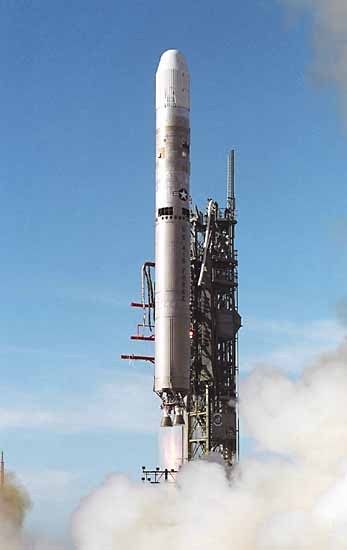
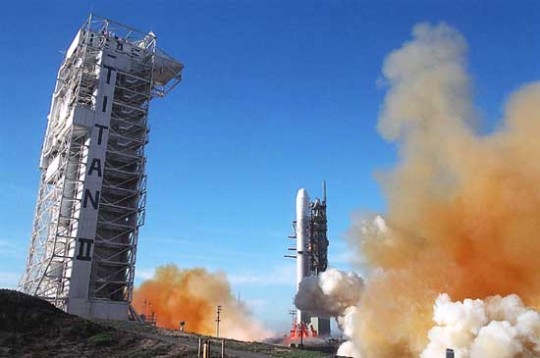

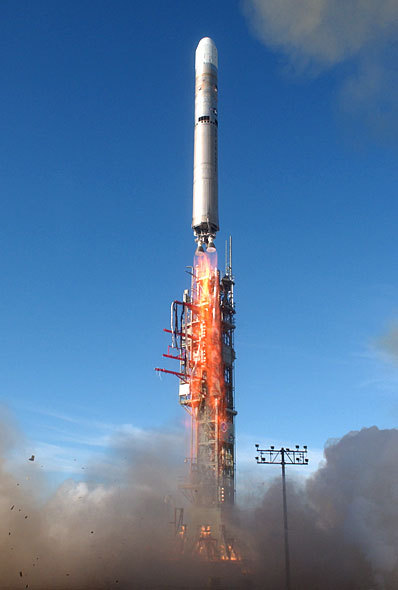

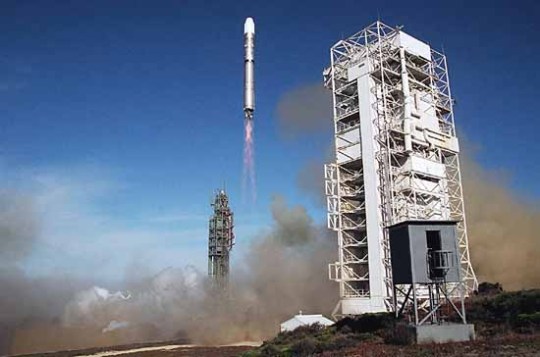
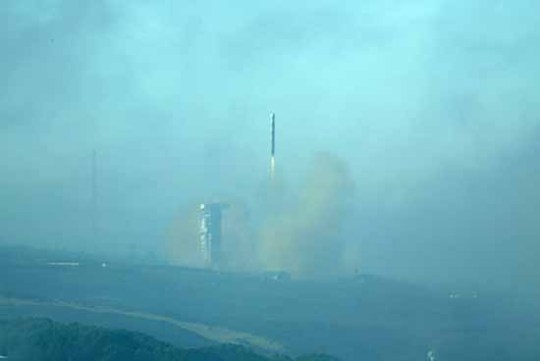

Titan II(23)G carrying USA-172 (DMSP-5D3 F-16), a DMSP weather satellite, liftsoff at 9:17a.m. PST from SLC-4 West at Vandenberg Air Force Base, California. This was the last launch of the Titan II. A total of 282 Titan IIs were launched between 1962 and 2003, of which 25 were space launches.
Date: October 18, 2003
source, source
#Titan II#rocket#launch#USA-172#Weather Satellite#SLC-4 West#SLC-4W#SLC-4#Space Launch Complex 4 West#Space Launch Complex 4#Vandenberg Air Force Base#VAFB#California#United States Air Force#U.S. Air Force#US Air Force#USAF#Department of Defense#DoD#October#2003#my post
39 notes
·
View notes
Text
SpaceX - SAOCOM 1A Mission Success
CONAE - SAOCOM 1A Mission patch. October 8, 2018
Falcon 9 launches SAOCOM 1A
On Sunday, October 7 at 7:21 p.m. PDT, SpaceX successfully launched the SAOCOM 1A satellite from Space Launch Complex 4E (SLC-4E) at Vandenberg Air Force Base in California. The satellite was deployed about 12 minutes after liftoff.
youtube
SAOCOM 1A Mission
Following stage separation, Falcon 9’s first stage returned to land at SpaceX’s Landing Zone 4 (LZ-4) at Vandenberg Air Force Base. This was SpaceX’s first land landing on the West Coast. LZ-4 is built on the former site of Space Launch Complex 4W, from which Titan rockets were previously launched.
SAOCOM 1A
A SpaceX Falcon 9 rocket launched the SAOCOM 1A for CONAE, Argentina’s space agency. SAOCOM 1A is the first of two SAOCOM 1-series Earth observation satellites designed to provide radar imagery to help emergency responders and monitor the environment, including the collection of soil moisture measurements. For more information about SpaceX, visit: https://www.spacex.com/ CONAE: https://www.argentina.gob.ar/ciencia/conae Images, Video, Text, Credits: SpaceX/CONAE. Greetings, Orbiter.ch Full article
29 notes
·
View notes
Photo


Watch the 72nd launch of a Falcon 9 today from Vandenberg, California and the first stage landing back next door to the launch pad. The Falcon 9 is launching three imaging radar satellites for the Canadian Space Agency, called of course Radarsat (Radarsat Constellation Mission or RCM). It will be the most valuable payload, at CAD1.2 billion (GBP708.7 million or USD902.5 million) Space X has launched to date. This will be the second flight of this first stage, B1051, which first launched the crew Dragon-DM1 demonstration flight on 2 March following which it landed back at LZ1/LC13 at Cape Canaveral after which it was towed by truck to California for this launch. The Falcon 9 uses the old Titan launch site at Vandenberg which had two pads SLC-4E and SLC-4W, Space X have converted the second pad into a landing zone now called LZ-4. Pics: SpaceX/Maxar Launch is scheduled for 3:17pm BST (07:17am in California) with only a 13 minute launch window. Watch live on the Space X website...
https://www.youtube.com/watch?v=8A2nJd9Urk8
0 notes
Link
(adsbygoogle = window.adsbygoogle || []).push({});
Vandenberg Air Force Base announced this week that they were prepared for the next SpaceX rocket launch. The next launch will take place at the Vandenberg Air Force Base Space Launch Complex-4, Lompoc, CA, and it’ll take place on Saturday, February 17th, at 6:17 AM Pacific Time. Onboard this SpaceX Falcon 9 rocket will be the PAZ satellite for Hisdesat of Madrid, Spain, and a set of smaller payloads with massive potential.
Included onboard this Falcon 9 is the Paz satellite that will become Spain’s first radar observation satellite as part of the PNOTS National Earth Observation Satellite Program. This satellite works with its own X-Band Synthetic Aperture Radar. With this radar, the satellite is able to capture images of the surface of the earth at 1m resolution. This spacial resolution means that 1 meter square will be the smallest space that one single pixel can cover.
X-SAR system modes of operation: • Spotlight: Imagery of size 10km x 5km @ 1m resolution, or 10 km x 10km at 2m resolution • ScanSAR: Imagery on a 100km swath @ 15m resolution • Stripmap: Imagery on a 30km swath @ 3m resolution (single polarization), or 15km swath @ 6m (dual polarization)
This launch will be lead by Col. Greg Wood, 30th Space Wing vice commander. “The 30th Space Wing is ready to support the first West Coast SpaceX launch of 2018,” said Wood. “Each launch marks the culmination of hard work and dedication of Team V. We are excited to support this mission as we continue to provide safe, secure access to polar orbit.”
Launch Details: • Launch Date: February 17, 2018 • Launch Window: 9AM Pacific Time (tenative) • Launch Vehicle: Falcon 9 FT • Launch Operator: SpaceX • Launch Site: SLC-4E Vandenberg Air Force Base, Ca • 1st Stage Recovery: RTLS to SLC-4W (TBC) • Payload: Paz (plus smaller packages) • Payload Type: Radar Imaging • Payload Operator: Hisdesat
Also the PAZ satellite will carry on board an ICE-CSIC Radio Occultation and Heavy Precipitation experiment (ROHP). It’ll also carry on board an AIS receiver from the Canadian listed company exactEarth. According to Hisdesat, “This will be the first time that SAR (Synthetic Aperture Radar) and AIS data fusion are being simultaneously captured, allowing for the best possible monitoring of the maritime domain worldwide.”
It’s expected that SpaceX will post live video of the launch event in their YouTube channel – or at least will have video there after the fact. If the launch happens, that is to say – that’s not always something that’s guaranteed, especially when you’re talking about miniature details that could lead to multi-million-dollar disasters. Cross your fingers for clear weather!
(adsbygoogle = window.adsbygoogle || []).push({}); http://ift.tt/2EXA1mR February 14, 2018 at 12:17AM
0 notes
Text
SpaceX landing zone at Vandenberg SLC-4W as of November 2016 (terraserver)
SpaceX landing zone at Vandenberg SLC-4W as of November 2016 (terraserver)
View On WordPress
0 notes
Photo

The next Falcon 9 will launch today (24 Aug) this time form SLC-4E at Vandenberg AFB on the west coast. It will launch Formosat-5 built and to be operated by Taiwan’s National Space Organisation (NSPO), it is the first spacecraft built entirely in Taiwan. The satellites main payload is called RSI (Remote Sensing Instrument) which is a 2m (6.2ft) telescope and CMOS camera with a resolution of 4m (13ft) for Earth observation. It will also carry another instrument the Advanced Ionospheric Probe (AIP) which will measure plasma in the ionosphere and also plasmas associated with seismic stress before earthquakes. Formosat-5 was originally due to fly on a Falcon 1e in 2013 but was transferred to a Falcon 9 when Space X ended development of the Falcon 1 in favour of the Falcon 9. At only 475kg (1,047 lb) Formosat-5 significantly short of the ~7,600kg (~16,800 lb) probable payload capability of the Falcon 9 to low polar orbit. The first stage, designated 1038, will be attempting to land on the landing drone ship Marmac-303 ‘Just Read the Instructions’ 344km (241 mi) downrange in the Pacific. Space X is converting the launch pad next door to the launch site, SLC-4W into a landing pad for stages to make a surface landing at Vandenberg but meanwhile it has to use the landing ships. Launch is scheduled for 17:51BST with a 43 minute window. Pic: SpaceX. This will be the 40th Falcon 9 launch. The Space X webcast will begin at T-10 minutes... http://www.spacex.com/WEBCAST
0 notes
Photo

Today (25 June) Space X will attempt to launch its 37th Falcon 9 just two days after the 36th launched Bulgariasat-1 on Friday albeit from a different launch pad. This will be the shortest interval between US launches since two military launches in 1989 when a Titan 34D-Transtage launched from LC-40 at CCAFS followed 44 hours later by a Titan II (23)G from SLC-4W* at Vandenberg AFB (however both Russia and China have achieved launches with less of an interval, Russia has twice achieved two Soyuz launcher flights within two hours of each other in 2013 and 2015). This stage on this flight will be a new one (1036.1) and will be equipped for the first time with new larger grid fins made of forged titanium instead of the previous ablative layer coated aluminium ones which have been subject to significant burn damaged especially on the higher speed reentries after geostationary launches. As well as hopefully not needing to be replaced after every flight the new fins larger size and improved aerodynamics will increase lift helping the boosters gliding ability and so reduce the amount of fuel needed to land the stage. This Falcon 9 will launch the next batch of ten Iridium NEXT global phone network satellites from SLC-4E at Vandenberg.
*In the background of this picture can be seen what is left of the other former Titan launch complex SLC-4W which Space X is converting into a rocket landing pad for the west coast. The Falcon 9 Dev-2 stage can also be seen in the background behind the base of the tower on the right were it has been parked for some time. This three engined version was built to conduct vertical landing tests from high altitude but was never used after operational Falcon 9′s began to succeed in landing themselves. It was then scheduled to be used in the in-flight launch abort system test of a Dragon 2 but that won’t now take place until after the first uncrewed orbital demonstration flight of Dragon 2.
The launch is scheduled for 21:25BST with coverage starting at about 21:10BST at... https://www.youtube.com/watch?v=7tIwZg8F9b8
0 notes